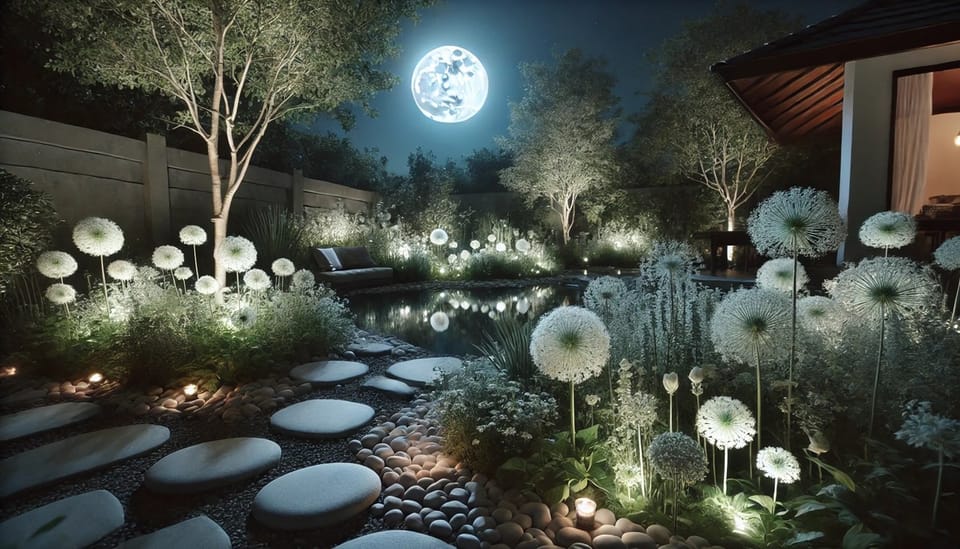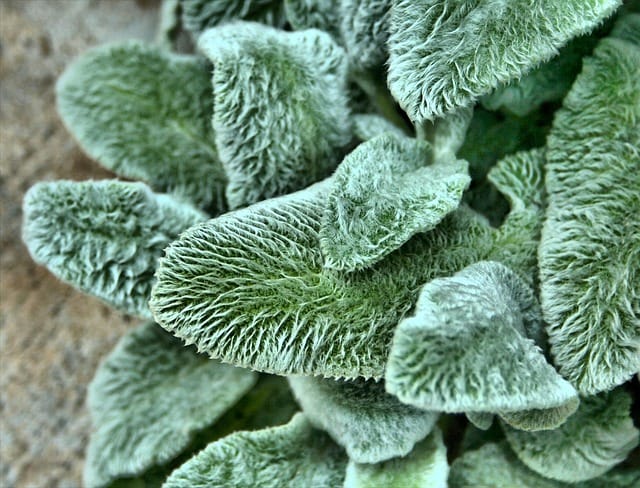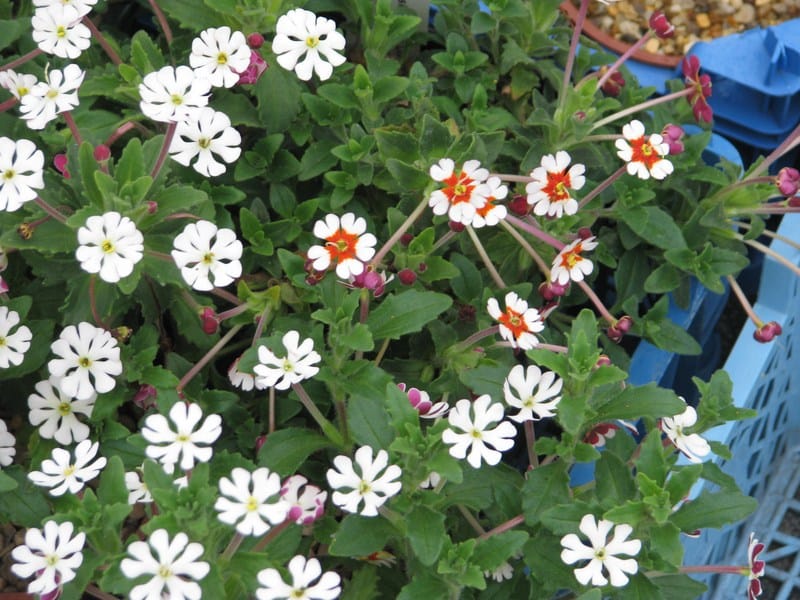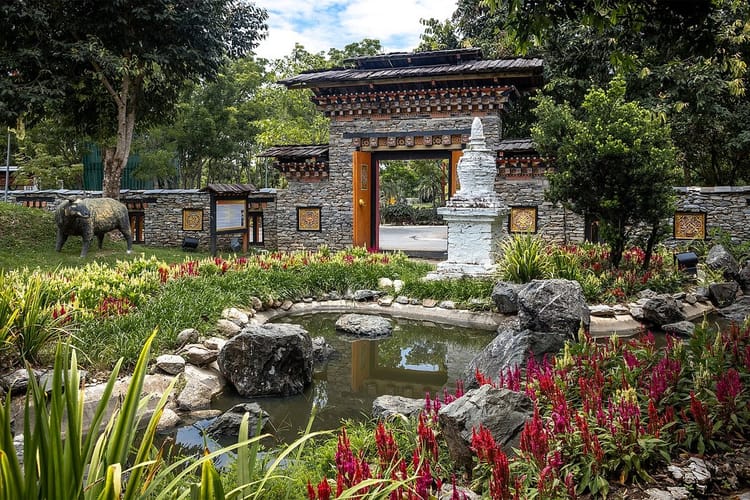Moon Gardens


Most gardeners design their gardens with a consideration for how it will be enjoyed in the daytime. This makes sense as we mostly work on our home landscapes during the day.
Not all of us have the luxury of being able to enjoy our gardens during the day, especially when we are working long hours or the days become shorter in the Winter. Imagine if we designed our gardens for how they look in moonlight, not sunlight? Gardens designed to be enjoyed at night are called Moon Gardens.
A moon garden is perfect for those who love spending time outdoors at night, whether for relaxation, meditation, or quiet conversation. By incorporating white and silver-toned plants, reflective elements, and night-blooming flowers, you can create a serene oasis comes alive in the twilight hours.
Choosing Plants That Shine in the Moonlight
One of the keys to a successful moon garden is selecting plants that reflect moonlight, illuminate softly in the dark, and enhance the nighttime ambiance. Here are some good plant choices for a Moon Garden:
White and Silver-Toned Foliage
Plants with pale or silver foliage stand out in the dim evening light, adding a ghostly glow to the garden. Consider some of these common garden plants:
- Lamb’s Ear (Stachys byzantina) – Soft, velvety leaves with a silver sheen.
- Dusty Miller (Senecio cineraria) – Lacy, silver foliage that glows under the moonlight.
- Artemisia (Artemisia spp.) – Wispy silver-gray foliage, adding texture and depth.
- White Variegated Hostas (Hosta spp.) – Large, bright leaves that reflect moonlight beautifully.

Night-Blooming Flowers
Some flowers save their most stunning displays for nighttime, releasing fragrances to attract nocturnal pollinators like moths and bats. Try these plants for an evening spectacle:
- Moonflower (Ipomoea alba) – Large, trumpet-shaped white flowers that unfurl at dusk.
- Evening Primrose (Oenothera spp.) – Delicate yellow or white blooms that open at night.
- Night Phlox (Zaluzianskya ovata) – Tiny white flowers with a strong vanilla scent.
- Tuberose (Polianthes tuberosa) – Fragrant white blooms that perfume the night air.

Incorporate Reflective Elements
To amplify the beauty of a moon garden, consider adding elements that catch and reflect light:
- Water Features – A small pond, birdbath, or reflecting pool mirrors the moon’s glow, creating a luminous effect.
- Light-Colored Stones & Gravel – White pebbles, crushed marble, or limestone pathways reflect natural light and brighten the space.
- Mirrors & Glass Orbs – Strategically placed mirrors or gazing balls can bounce moonlight around the garden.
Soft Outdoor Lighting
While a moon garden is designed for enjoyment in soft glow of moonlight, full moons do not appear every night and some nights maybe cloudy. Consider some soft lighting features to enhance visibility and ambiance on darker nights:
- Solar-Powered Lanterns – Gentle illumination that blends seamlessly into the landscape.
- Fairy Lights in Trees or Shrubs – Twinkling lights mimic stars and add a magical feel.
- Glow-in-the-Dark Garden Accents – Luminous stepping stones or garden sculptures add an ethereal touch.
Final Touches: Making Your Moon Garden a Retreat
When planning a moon garden, pay attention to where you will be enjoying the space. Some may want a moon garden that is for viewing from inside the home, but if you want to step outside and bask in the moonlight consider some other elements that can provide an immersive experience:
- Comfortable Seating – A cozy bench or hammock makes it easy to unwind and soak in the tranquil atmosphere.
- Fragrant Plants – Incorporate rosemary, lavender, or jasmine to enhance the sensory experience.
- Wind Chimes or Water Fountains – Soft sounds create a soothing backdrop to your moonlit escape.
A moon garden is more than just a collection of plants. It is an experience, a retreat, and a sensory delight that transforms the night into something magical. Whether you have a large backyard or a small patio, with a few thoughtful design choices, you can create your own luminous nighttime paradise.





